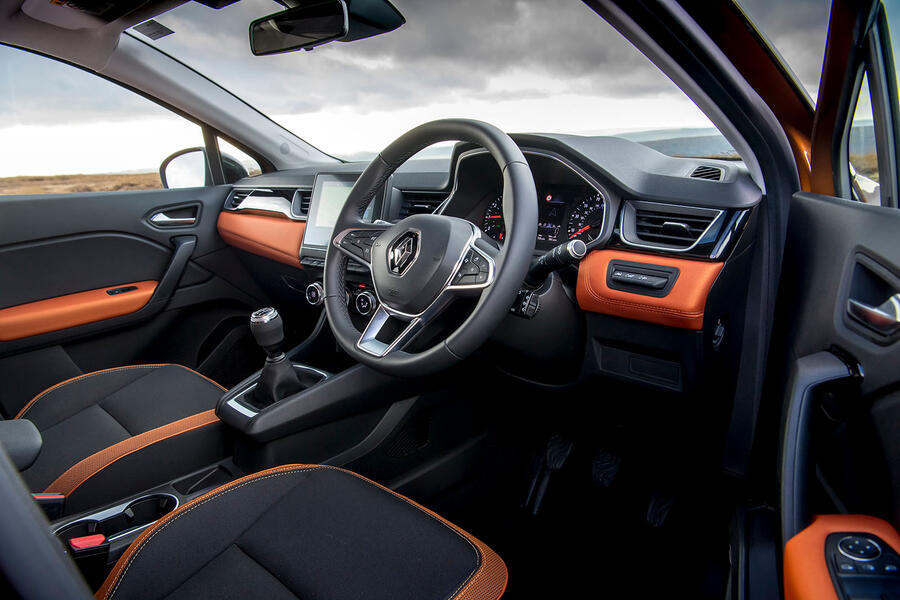[ad_1]
Having grown by 110mm in overall length, the car now offers very respectable second-row occupant space, which only taller adults will probe the limits of (and more likely to headroom than leg- or knee-). The car retains a useful sliding rear bench seat, and with it moved forwards boot space swells to a very roomy 536 litres. There’s a split-level boot floor also.
Much of the cabin architecture and componentry is shared with the new Clio, but that need be no criticism. You have to climb all the way to the uppermost of Renault’s three-tier trim level range to experience the interior at its plushest, where soft-touch mouldings cover parts of the centre console and the upper doors as well as the upper dash; and if you do, by the way, the Captur is a match on perceived quality for almost anything in the class. Even in mid-level ‘Iconic’ trim, as we spent the longest testing it, the cockpit looks and feels quite tactile and consistently classy, with flashes of ambience-enlivening colour to be had if you want them.
Onboard technology should be more of a strong suit than it ever was before for this Captur. Fully-loaded cars will combine a 9.3in portrait-oriented central touchscreen infotainment system with a 10in fully digital instrumentation screen, the latter conveying navigation instructions and more (although, since it doesn’t arrive in the UK until later this year, we haven’t tested it yet). They will also come with all of the driver assistance systems that Renault can muster, among them autonomous emergency braking and lane keeping assist systems, and adaptive cruise control and parking assist systems also, not to mention a ‘level two autonomous’ traffic jam assistance system which effectively guides and drives the car for you in heavy congestion.
Plenty of choice on engines means you’re more likely to find a motor to suit your particular needs here than with certain rival crossovers. There are two diesel and three petrol options from launch, with a top-of-the-range plug-in hybrid option to be branded ‘E-Tech’ being added later this year.
Having tested the mid-range 1.3-litre ‘TCE 130’ in Europe last year, we opted to try the entry-level 1.0-litre TCE 100 turbo triple petrol on UK roads. It’s a pleasant and willing enough engine with creditable refinement and drivability; considering it’s the cheapest option in the range, that’s not to be sniffed at.
A decently gutsy, boosty-feeling delivery of mid-range torque provides good usable performance through the lower gears, even if, at times, the longish higher intermediate ratios of the car’s five-speed manual gearbox do make it seem a bit sluggish.
The shift quality of that gearbox is nothing special, and neither is the Captur’s ride – the latter feeling slightly wooden and over-firm around town. An ideally paced and intuitive-feeling steering system does make the car easy and fairly enjoyable to thread along at cross-country pace, however – although the likable long-wave fluency of the old car’s high-speed ride seems, rather regrettably, to have been disposed of.

[ad_2]
